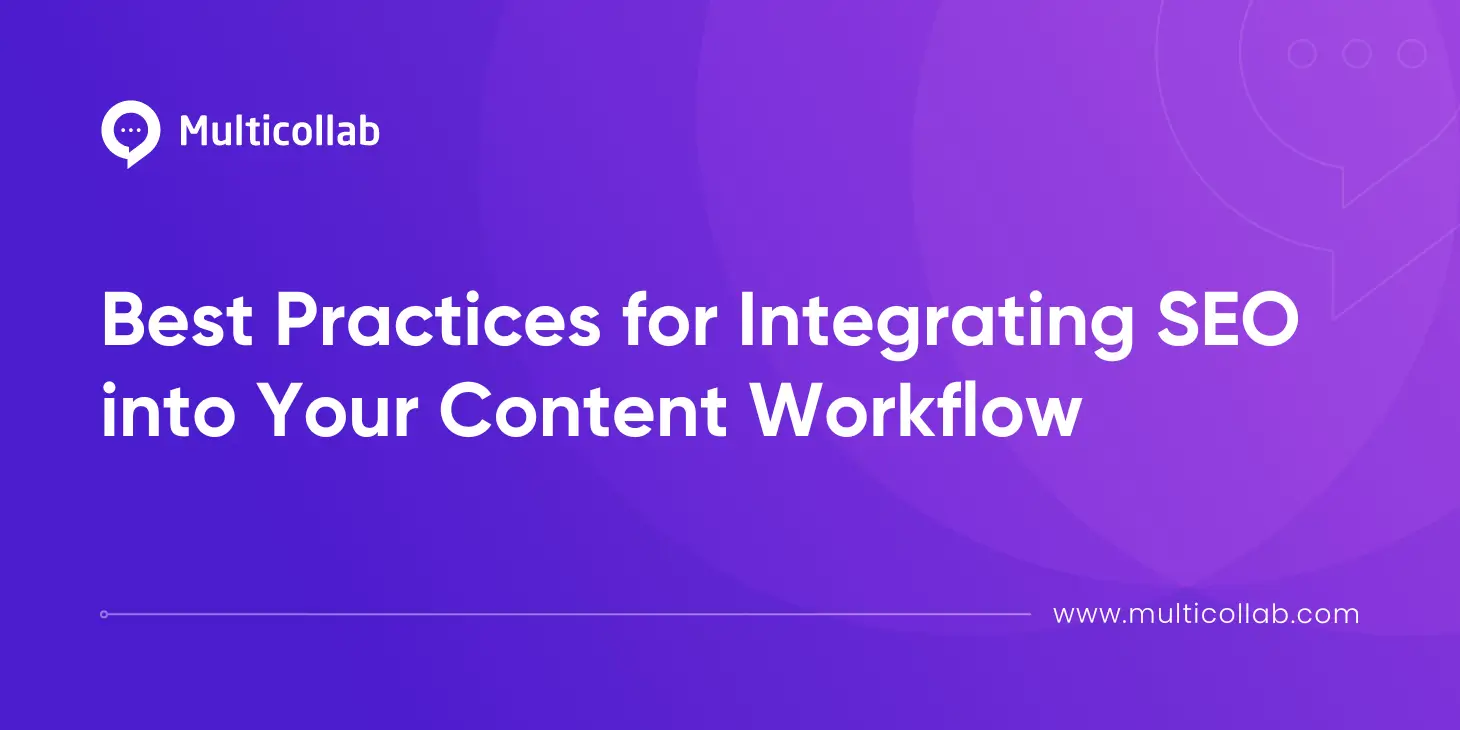Table of Contents
Search engine optimization (SEO) is not just a buzzword; it’s a game-changer for your content strategy. By integrating SEO into your content workflow, you’re reaching a broader audience and providing value and relevance. This is crucial for maintaining engagement and driving conversions. SEO is the art and science of optimizing your content to rank higher in search engine results pages (SERPs), increasing your website’s visibility and attracting more organic traffic. It’s a powerful tool that can transform your content’s performance and your business’s success.
SEO involves more than just stuffing your content with keywords or building excessive backlinks. It requires a deep understanding of various fundamental concepts that work together to improve your site’s performance on search engines. Keywords are the terms and phrases that users enter into search engines when looking for information. Identifying and incorporating the right keywords into your content helps search engines understand your content and match it with relevant search queries. Backlinks, or inbound links, are links from other websites to your content. They act as votes of confidence, indicating to search engines that your content is credible and valuable. Meta descriptions, conversely, are summaries of your content that appear below the title in search results. Crafting compelling meta descriptions can significantly impact your click-through rates, enticing users to click on your link over others.
Keyword Research and Creating SEO-Friendly Content
Effective keyword research is the foundation of any successful SEO strategy. Tools like Google Keyword Planner, Ahrefs, and SEMrush are invaluable for identifying relevant keywords with high search volumes. These tools provide insights into keyword difficulty, search volume, and the competitive landscape, helping you choose keywords that can drive significant traffic to your site. It’s essential to strike a balance between high-traffic keywords and those with lower competition to maximize your chances of ranking well.
Understanding the difference between long-tail and short-tail keywords is crucial for effective keyword selection. Short-tail keywords with high search volumes and competition are typically one to two words long. Long-tail keywords, on the other hand, are longer phrases that are more specific and have lower search volumes but less competition. Choosing the right keywords involves more than just search volume and competition; it’s also essential to consider their relevance to your audience and the overall context of your content.
Creating high-quality, original content is at the heart of any effective SEO strategy. Search engines prioritize content that provides value to users, so it’s crucial to focus on writing informative, engaging, and well-researched articles. Readability and user experience are critical factors in SEO-friendly content. Your content should be easy to read and understand, with clear and concise language. Structuring your text with headings, subheadings, and bullet points can make it more accessible and improve the user experience.
Incorporating keywords into your content is essential but needs to be done naturally. Keyword stuffing can lead to search engine penalties and detract from the user experience. Instead, use your primary and secondary keywords in a way that feels organic and enhances the overall message of your content. This includes using keywords in titles, headings, and throughout the body text, ensuring they fit naturally within the context of your writing.
Optimizing Meta Tags, Descriptions, Images, and Multimedia
Optimizing meta tags and descriptions is a vital part of SEO that can significantly impact your click-through rates and overall search engine performance. Meta titles and descriptions are the first things users see in search results, so crafting compelling and informative snippets is crucial. Your meta title should be concise and include your primary keyword, while your meta description should provide a brief overview of your content, enticing users to click through to your site. Each page on your website should have unique meta tags and descriptions to avoid duplication issues and ensure that each piece of content is accurately represented in search results.
Optimizing images and multimedia is another crucial aspect of SEO that often gets overlooked. Using descriptive, keyword-rich filenames and alt tags can significantly enhance your content’s search engine visibility. Before uploading an image, rename the file with relevant keywords that describe the image content. Alt tags provide a textual description of the image for search engines and visually impaired users, boosting both SEO and accessibility.
Best image size and format practices play a significant role in page load speed, which is critical for SEO rankings. Large image files can slow down your site, leading to higher bounce rates and lower search engine rankings. To optimize image size, compression tools like TinyPNG or ImageOptim can be used to reduce file sizes without compromising quality. Choosing the correct format is also essential; JPEG is ideal for photographs due to its balance of quality and file size, while PNG is better for transparent images. Adding captions and descriptions to your pictures provides additional context and enhances user experience, giving search engines more context to index your content effectively.
Boost SEO with keyword research, optimized content, meta tags, and mobile-friendliness
Ensuring your website is mobile-friendly is essential for both user experience and SEO. With more users accessing the internet via mobile devices, having a responsive design is crucial. Responsive design allows your website to adapt to different screen sizes and resolutions, providing an optimal viewing experience across all devices. This improves user satisfaction and helps retain visitors, reduce bounce rates, and boost your site’s search engine rankings.
Mobile SEO best practices go beyond just having a responsive design. It’s essential to ensure your content is easily accessible and readable on smaller screens. This includes using larger fonts, ensuring buttons and links are easily clickable, and avoiding pop-ups that can be difficult to close on mobile devices. Tools like Google’s Mobile-Friendly Test can help identify issues affecting your site’s mobile performance. Regular testing and monitoring can help you resolve problems quickly, ensuring a seamless mobile user experience.
Improving Page Load Speed
Improving page load speed is crucial for providing a positive user experience and enhancing SEO. Slow-loading pages can lead to high bounce rates and lower rankings in search engine results. Tools like Google PageSpeed Insights and GTmetrix are valuable for measuring page speed and identifying areas for improvement. These tools provide detailed reports on various performance metrics, helping you pinpoint specific elements slowing down your site.
Several practical tips exist for improving load times. Image optimization is one of the most impactful measures; compressing images and using appropriate file formats can significantly reduce load times. Minimizing HTTP requests by combining files and reducing the number of elements on a page can also speed up your site. Additionally, leveraging browser caching and enabling compression with tools like Gzip can contribute to faster load times. By implementing these strategies, you can create a quicker, more efficient website that enhances user experience and improves search engine rankings.
Monitoring and Analyzing SEO Performance
Monitoring and analyzing website performance is essential for understanding the effectiveness of your SEO strategies and making data-driven decisions. Setting up tools like Google Analytics and Google Search Console is the first step in this process. Google Analytics provides insights into organic traffic, bounce rate, and user behavior. At the same time, Google Search Console offers data on search performance and issues affecting your site’s visibility in search results.
Key metrics to track include organic traffic, bounce rate, and keyword rankings. Organic traffic indicates the number of visitors coming to your site from search engines, while bounce rate shows the percentage of visitors who leave your site after viewing only one page. Monitoring these metrics over time can help you identify trends and areas for improvement. Using data from these tools, you can refine and adjust your SEO strategies to enhance performance and achieve better results.
Collaborating with Your Team
Integrating SEO into the content creation requires perfect collaboration between various team members, including writers, editors, and SEO specialists. This collaboration ensures that SEO considerations are incorporated from content development. By involving SEO specialists early in the brainstorming and planning phases, you can identify the best keywords and strategies to target, ensuring that the content aligns with overall SEO goals. Collaborative writing tools can facilitate this process by allowing team members to share ideas, track progress, and make real-time edits.
Training writers and editors on SEO best practices is crucial for consistently creating SEO-friendly content. Regular training sessions and workshops can help your team stay updated on the latest SEO trends and techniques. Resources like SEO guidelines, checklists, and templates can further empower your team to produce optimized content. Using collaborative tools, you can also set up shared documents and project boards where team members can access these resources and seek guidance.
Establishing a workflow for SEO review and approval ensures that all content meets your SEO standards before publication. This workflow should include checkpoints for keyword optimization, meta tag creation, and overall content quality. Tools like Yoast SEO for WordPress can help automate parts of this process by providing real-time feedback on SEO performance. Having a clear review and approval process in place not only improves the quality of your content but also ensures consistency across your website.
Conclusion
Integrating SEO into your content workflow is essential for improving your website’s visibility and driving organic traffic. Each step plays a vital role in enhancing your SEO performance, from conducting effective keyword research and creating SEO-friendly content to optimizing meta tags, images, and multimedia. Ensuring mobile-friendliness, improving page load speed, and continuously monitoring and analyzing SEO metrics are critical for maintaining and improving your search engine rankings.
Collaborating with your team and leveraging collaborative writing tools can streamline the content creation, ensuring that SEO best practices are followed consistently. By establishing a comprehensive SEO workflow that includes training, review, and approval stages, you can produce high-quality, optimized content that resonates with your audience and meets search engine requirements. Adopting these best practices will help you build a robust SEO strategy that enhances your content’s effectiveness and drives long-term success.







